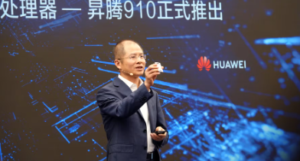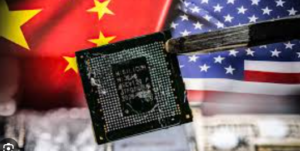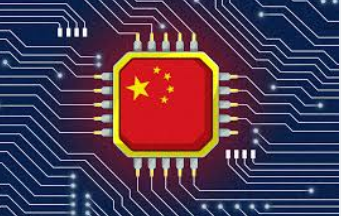Keywords: China AI chips, Nvidia competitors, U.S. export restrictions, Huawei Ascend chip, SMIC semiconductor, Chinese tech industry, AI chip development, Biren Technology IPO, Enflame IPO, Nvidia CUDA platform, AI industry challenges, Chinese technology innovation, AI hardware and software ecosystem.
Sub headline : Chinese tech giants like Huawei and Alibaba are striving to develop homegrown AI chips, but U.S. export restrictions and technological gaps pose significant challenges.
Beijing, China — As China intensifies its efforts to create a domestic alternative to Nvidia’s advanced AI chips, the nation faces an uphill battle. U.S. export sanctions, coupled with a lack of cutting-edge technology, are hampering Beijing’s ambitions to dominate the global AI industry. According to industry experts, bridging the gap with Nvidia—whose GPUs are crucial for AI applications—remains a daunting challenge.
Chinese tech giants such as Huawei, Alibaba, and Baidu, along with promising startups like Biren Technology and Enflame, are ramping up efforts to produce AI chips that can rival Nvidia’s. But despite these initiatives, analysts suggest that Chinese firms still lag behind in critical areas, including general-purpose GPU technology.
U.S. Sanctions Hit China’s AI Ambitions Hard
Nvidia’s GPUs are indispensable for training AI models that power revolutionary applications like chatbots and autonomous systems. However, since 2022, the U.S. has imposed strict export restrictions on Nvidia’s most advanced chips to China, effectively stifling the growth of Chinese AI technology. These sanctions have been a major setback for Beijing’s strategy to reduce dependency on U.S. tech and become a global leader in AI.
“The U.S. export restrictions have made it incredibly challenging for Chinese companies to access the advanced semiconductors they need to compete globally,” said Wei Sun, a senior analyst at Counterpoint Research. “While Chinese firms have made progress in developing AI-specific chips, they are still far behind Nvidia in general-purpose GPUs.”
Technological Gaps and Production Limitations
The struggle for Chinese companies to produce high-performance chips is compounded by a lack of cutting-edge technology. Most Chinese chipmakers, including leading manufacturer SMIC, rely on foreign technology and machinery to produce semiconductors. However, U.S. sanctions have restricted SMIC’s access to key manufacturing equipment, particularly from Dutch company ASML, which is essential for producing advanced chips.
This has forced Chinese companies to rely on older technology, limiting their ability to compete with global leaders like Nvidia. “The key bottleneck will be domestic foundry leader SMIC, which is grappling with how to allocate its limited resources for advanced chip production between various clients like Huawei and GPU startups,” said Paul Triolo, a partner at consulting firm Albright Stonebridge.
Huawei Leading the Charge, but Challenges Remain
Among Chinese contenders, Huawei stands out as the leader with its Ascend series of AI chips. The company is preparing to launch its latest chip, the Ascend 910C, which some reports suggest could be on par with Nvidia’s high-end H100 GPU. However, Huawei still faces significant obstacles due to limited production capacity and U.S. sanctions that restrict access to critical technologies.
“The GPU software support ecosystem is much more entrenched around Nvidia, and Huawei faces major challenges in producing sufficient quantities of advanced GPUs,” Triolo noted. This makes it difficult for Huawei and other Chinese companies to build a developer community and software ecosystem comparable to Nvidia’s CUDA platform.
Nvidia’s Competitive Edge: More Than Just Hardware
Nvidia’s dominance extends beyond its hardware. The company’s CUDA software platform has created a thriving ecosystem that allows developers to build applications optimized for its chips. This integrated ecosystem, which includes tools for developers and a robust support network, gives Nvidia a substantial competitive advantage that Chinese companies are struggling to replicate.
“This is the key—it’s not just about the hardware but the overall ecosystem, tools for developers, and the ability to continue evolving as technology advances,” Triolo explained.

Hope for Chinese Startups Amid Challenges
Despite the obstacles, Chinese startups like Biren Technology and Enflame remain optimistic. Both companies are reportedly planning initial public offerings (IPOs) in Hong Kong to raise funds for expansion and hiring. However, these firms lack the financial muscle of giants like Huawei and face significant challenges in scaling their operations and innovating under the current sanctions regime.
“Biren and the other GPU startups are staffed with experienced personnel from leading semiconductor companies like Nvidia and AMD, but they face the additional challenge of lacking the financial depth that Huawei has,” Triolo said. “Raising funds through IPOs is crucial for their survival and growth.”
The Road Ahead: Challenges and Opportunities
As China pushes forward with its semiconductor ambitions, the road to creating a domestic Nvidia rival is fraught with challenges. Overcoming technological gaps, navigating U.S. sanctions, and building a robust software ecosystem will be critical for these companies to compete in the global AI market.
While the future remains uncertain, one thing is clear: China’s tech giants and startups are not giving up. With strategic investments and continued innovation, they hope to carve out a space for themselves in the rapidly evolving AI landscape.

China’s Challenges in Competing with Nvidia in the AI Chip Market
- Sanctions and Export Controls: U.S. restrictions on the export of high-performance AI chips, like Nvidia’s, to China significantly limit the capabilities of Chinese firms. These controls also affect access to advanced semiconductor manufacturing equipment, which is crucial for producing high-quality AI chips.
- Technological Expertise: Chinese companies face a technological gap compared to Nvidia. While companies like Huawei, Alibaba, and Baidu are developing AI chips, they are still behind Nvidia in terms of performance and software ecosystem support.
- Manufacturing Constraints: Chinese chipmakers often rely on Taiwan Semiconductor Manufacturing Co. (TSMC) for producing their designs. However, U.S. sanctions have restricted Chinese firms’ access to TSMC, pushing them to use domestic manufacturers like SMIC, which lags behind in technology.
- Software Ecosystem: Nvidia’s dominance isn’t just due to its hardware but also its CUDA software platform, which has created a robust ecosystem for developers. Replicating this ecosystem poses a significant challenge for Chinese competitors.
- Domestic Efforts: Despite these challenges, Chinese companies are investing heavily in developing their own AI chips. Startups like Biren Technology and Enflame are making strides, though they still face hurdles in funding and scaling production.
- Potential Leaders: Huawei, with its Ascend series, is one of the most prominent players attempting to compete with Nvidia. However, even Huawei faces significant challenges due to the restricted access to cutting-edge manufacturing technology.






